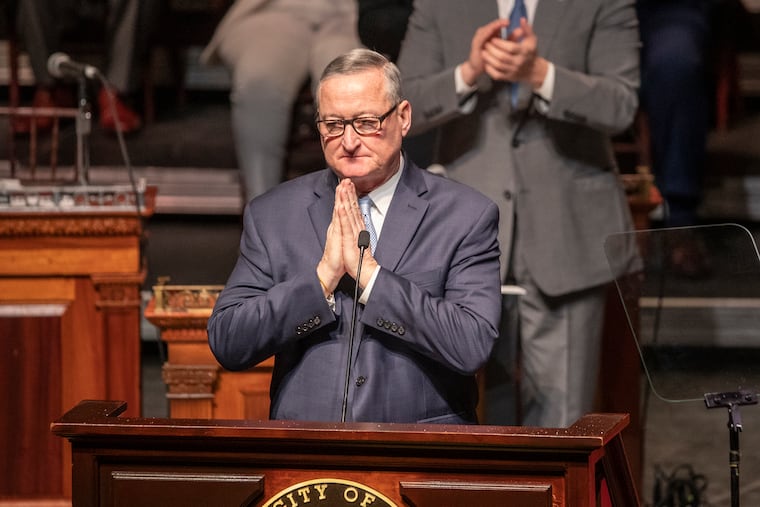To address sexual misconduct in the workplace, City Hall must lead by example | Editorial
Mayor Jim Kenney suggests the Art Museum needs to improve its policies ollowing allegations about workplace-related misconduct there. But an audit 18 months ago said the same thing about City Hall. Has any progress been made?

After allegations of workplace-related misconduct by a former assistant administrator at the Philadelphia Museum of Art, Mayor Jim Kenney last week called on the institution to improve its handling of such matters.
We find that a little surprising, given that the mayor still, in our view, has a ways to go in order to fully address the issue of how city government responds to the issue of sexual harassment in the workplace. While the city has responded with some actions following an audit by City Controller Rebecca Rhynhart’s office more than 18 months ago, some key recommendations are yet to be followed.
At the PMA, according to stories in the New York Times and The Inquirer, employees reported incidents of inappropriate conduct by Joshua R. Helmer, the museum’s onetime assistant director of interpretation. The alleged conduct left some women who worked for Helmer feeling victimized with little apparent institutional support or recourse. Helmer has since lost his job at the art museum in Erie.
» READ MORE: Philly spent $2.2M since 2012 to settle sexual harassment cases. The controller says it’s probably higher
Kenney’s office insisted it agrees with Rhynhart that the city must reform how it handles investigations and discipline for workplace-related sexual misconduct. It also said the administration has long been working to improve policies, procedures, and training.
Rhynhart acknowledged these actions but told The Inquirer the city has not fulfilled the main recommendations of the audit. The first would be to centralize reporting and investigation of complaints rather than have complaints handled by the individual departments from which they are generated. The city — which has a unit that serves as a clearinghouse for complaints, but which doesn’t investigate all cases — argues that employees would be more comfortable handling complaints within their own departments. That deserves rethinking. Departments can vary widely in how they respond to complaints, and internal politics should not influence the outcome of sexual harassment investigations. That’s exactly what happened recently in the police department when a woman was retaliated against for complaining. Ultimately, Commissioner Richard Ross resigned. This was a clear case of a department’s failure to adequately respond to complaints.
Rhynhart has also pushed for standardizing disciplinary measures to make sure there are consistent consequences for misconduct. The city argues that’s tough with a number of labor unions representing employees.
» READ MORE: Student on former Philadelphia Museum of Art exec: 'Nobody in the world treated me this way’
So far, data to demonstrate improvement stemming from the new city procedures are not readily available.
Philadelphia is not the only government or institution grappling with how to respond to (mostly) men who insist on abusing their power. Last week, Gov. Phil Murphy addressed the need for New Jersey to come up with policies. And the Philadelphia Museum of Art is reviewing its own approach, hiring outside consultants to review policies and training.
Many institutions and companies have long figured out how to insure that everyone is safe from harassment and abuse in the workplace. It shouldn’t be that complicated — especially when, in the case of the city, there is a detailed blueprint for how to act.